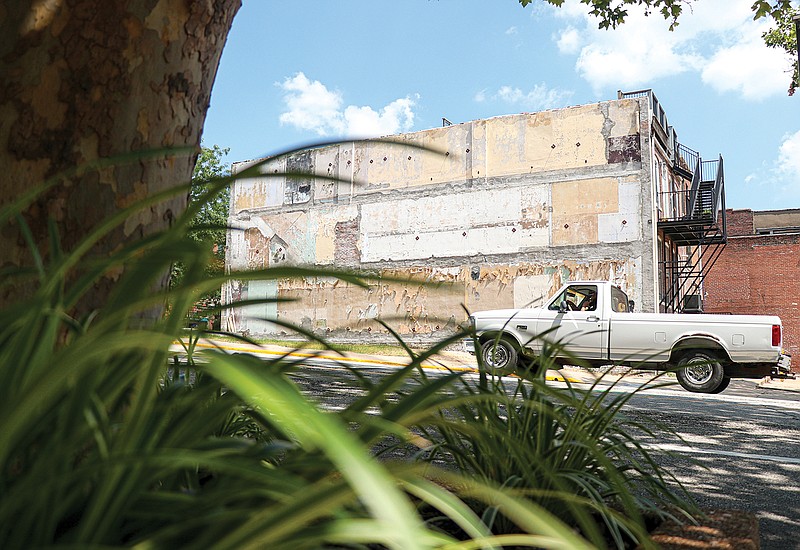The Jefferson City Council on Monday approved a tax abatement and redevelopment plan for the properties at 200 and 202 E. High St.
After an almost two-year legal process, the city demolished the property at 200 E. High St. - which had partially collapsed into Madison Street due to water infiltration and hidden decay - in early April. The demolition was delayed partially due to concerns about the shared wall with 202 E. High St., which was saved.
On Monday, the council approved a Chapter 353 tax abatement for both properties.
In March, the council created the Jefferson City Redevelopment Corporation under Chapter 353 of the Missouri Revised Statutes.
Tax abatement under 353 is only available for blighted real properties, City Attorney Ryan Moehlman previously said. To receive one, applicants need a blight study and redevelopment plan for the property.
The 353 projects can be granted 50-100 percent tax abatement for 10-25 years.
The bill allows the city to impose a $120,000 special tax bill on the property at 202 E. High St. that will be paid back solely by the tax savings realized by 202 E. High St. property owners Ruben and Carol Wieberg.
The tax abatement granted by the bill will last 25 years and amounts to 100 percent of real property taxes on improvements in the first 10 years and 50 percent of all real property taxes for the last 15 years.
Once the tax abatement expires, if there are any remaining amounts on the tax bill, they will also expire.
According to the bill summary, the total amount generated by the tax abatement will depend on the assessed values of the property for the next 25 years.
The bill approved Monday also included the redevelopment plan and blight study required for a 353 tax abatement.
The agreement will also amend part of the December 2019 settlement agreement between the Wiebergs and the city in regards to the now-exterior wall of 202 E. High St. The agreement required the owners to reinforce and secure the wall to serve as the building's exterior using brick masonry.
The amendment allows the Wiebergs to instead use a smooth synthetic stucco, similar in appearance to the exterior of 227 E. High St.
The City Council introduced and approved the bill Monday. Moehlman said they asked for this suspension of the rules so the property owners could move forward with the wall repair and reintroduce tenants into the vacant building.
The agreement also grants the city license to potentially paint a mural on the exterior wall, should they want to in the future.
Moehlman said any process to paint on the wall would go through and be approved by the council.
The city currently owns 200 E. High St., and future discussions will determine how the property is developed. The redevelopment agreement will allow the city to move forward with these discussions, Moehlman said.
In April, the council and residents shared their thoughts on potential uses for the property including a new construction for offices or retail or an outdoor community gathering space.

